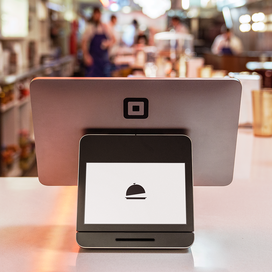Table of contents
Building a restaurant or food and beverage empire is, well, complicated. For example, where you scale, how you expand, and how you stay rooted in your mission are crucial to helping you maintain your appeal and authenticity to your target audience so that your business can be sustainable long term. Whether you’re looking to grow a suite of differing restaurants or a fleet of food and beverage stores, taking the time to learn from those who’ve already achieved it can save you a lot of time and energy.
Chris Harris, co-founder and CEO of Hi-Lo Liquor Market, and Zoe Nathan, co-owner and CCO of Rustic Canyon Family, recently sat down with Square for a live rendition of its popular YouTube show “You Two Should Meet,” which brings together entrepreneurs to discuss what it takes to build an innovative business and stay grounded in today’s society.
Here are five key strategies that emerged:
Choose investors who align with your goals.
“Money is the blood of a business,” says Harris. Choosing the right investor(s) to help you grow isn’t just about finding someone with resources, but it’s about establishing a relationship that’s mutually beneficial. Identifying the division of labor and having a smart business lawyer on your side are also key to the partnership, according to Harris. Protecting your vision and creating an environment of trust takes away the pressure, allowing you to grow into the relationship.
When discussing his decision to start with a “moderate” investment for his business, he stressed it made sense to him for three reasons: “growing it with integrity, taking enough money to start it, and being able to try things out.” The flexibility to shift and change as the business and the industry itself evolves allowed Harris to experiment with different aspects. For example, partnering with food trucks led him to eventually decide to launch his own food program. This grow-as-you-go approach resulted in him opening three unique locations across southern California, each with its own identity and flare.
For businesses considering significant investments, think about your ideal investor relationship and outline how you’d like to experiment and grow over time.
Build an authentic relationship with the neighborhood.
Whether you choose to grow throughout one neighborhood or an entire state, both business owners emphasize that it should be done with intention. For Harris, it’s about starting with a baseline of what you think will work and then identifying with the neighborhood. “You go around and actually just have conversations with people about what [they’re] into,” notes Harris.
Blindly going into a neighborhood and ignoring the needs of the people within can come across as irresponsible, but it can also impede efforts toward authenticity. It’s one of the reasons Nathan of Rustic Canyon Family says all nine of its restaurants exist within the Santa Monica neighborhood. When people ask about Rustic Canyon Family opening up restaurants in other parts of the city or state, Nathan’s answer is clear: “I don’t know anybody over there.” For her, she simply wants to fill a need at home and make things her friends and family can enjoy. “Make what you want to serve to your own [community],” says Nathan.
While each business owner has a different approach to building and scaling their business, approaching each neighborhood with care — especially if you don’t happen to live there — can help set you apart and ease your journey into the area.
Consider diversifying revenue streams to boost business.
Outside of finding the right investors or balance with a neighborhood, finding new ways to appeal to customers is also key to growth. Diversifying revenue streams can help bring in new customers and increase revenue in a noticeable way. “[We’d] look at our P&L (profits and losses) and we’re like, ‘We’re still not making money.’ And then you’re like, ‘Okay, let’s go into merch.’ And then all of a sudden it’s like, you see that tipping point,” says Nathan. In fact, research supports this: Nearly three in five consumers have purchased retail items at a local restaurant in the past year, according to the Square Future of Commerce report.
As customers look for more from the businesses they frequent, exploring new ways to cater to them can expand your customer base and increase profits. Hi-Lo’s aforementioned food program is proof. After partnering with several food trucks over the years and witnessing them sell out, Harris was convinced there was a demand from their customers to have food offerings paired with one-of-a-kind drinks. This led to Hi-Lo ideating about a food program that they plan to launch later this year, broadening their reach and hopefully boosting their sales. This method of discovery is also a testament to the fact that business growth can take different forms, and more importantly, happen organically.
Think about the special events or moments that you already offer that attract the most customers and find opportunities. Or, consider broadening your offerings in a way that aligns best with your business and customer base.
Raise prices with purpose.
Diversification isn’t the only way businesses are hoping to see an increase in revenue. Raising prices is also a tangible option for restaurants. In fact, 29% of restaurants are considering raising their prices in 2023, according to the Square Future of Restaurants report. When it comes to raising prices, Nathan’s approach is built on trust. With restaurants that have been open for over 16 years, customers know what they’re paying for. For example, all of their items come from the farmers market, and they’re clear about this with customers so they understand why things are priced the way they are. “[You] have to have people trust you … If I’m charging them something, then I’m not messing with them,” explains Nathan. As times change and evolve, she points out that this trust becomes more important.
“You have to gain people’s trust and not take advantage of it,” explains Nathan.
Harris, however, notes that this trust extends to more than just customers; customers also expect the businesses they frequent to take proper care of their staff. “People want to make sure that people are getting health insurance. People want to make sure that people are being paid correctly. It feels like finally the customer is advocating for the whole system as opposed to us being like, ‘Hey, guys, this is why we’re charging you this much like so and so,’” he explains. Because of this, Harris notes that it’s been easier to raise prices, taking some of the pressure off of the business itself.
Square Future of Restaurants report says that 88% of consumers would understand if their favorite business raised its prices given the rising cost of goods. Approach how and when to raise prices with care to prevent alienating loyal customers. If the price increase is substantial, explain why to customers and make sure it comes from a legitimate business need.
Make time to revisit your business’s mission.
Amidst all of the change in the past few years, it can be easy for business owners and their teams to lose sight of their purpose. Navigating financial pressures, rapidly changing consumer preferences, and an evolving industry have become the new normal for restaurateurs everywhere, but reconnecting with your business’s purpose or mission can help strengthen your business. Nathan shares that constant reminders are how she helps her team to pause after pivoting. “I’m writing the story of each restaurant and then handing it to everybody,” she explains, highlighting that she tends to focus on the past, present, and future story of the restaurants to help articulate a clear vision. Even in the midst of a frenzied day, she believes it’s important for restaurants everywhere to pause and realize that they’ve survived. “Now we get to thrive. And what does that look like?” she adds.
Tackling significant growth after a challenging few years may feel daunting, but these two business owners show how investments, expansion, and customer connections can be approached with intentionality and lead to success. “Opening a restaurant is scary and exciting like throwing a party that nobody RSVP’d to. And you’re like, I hope they like me, you know?”
![]()













